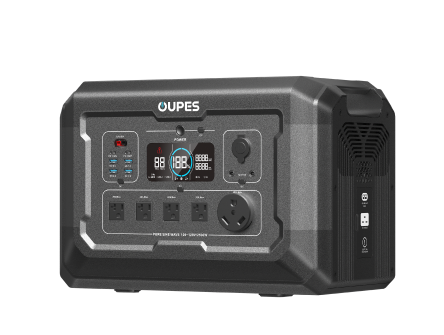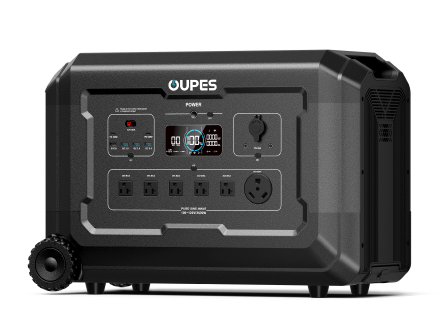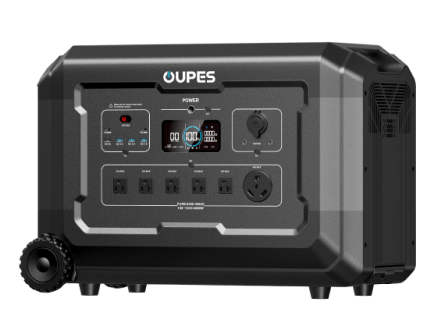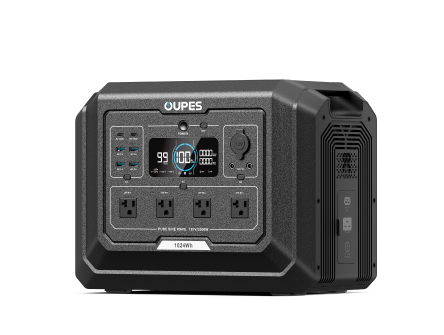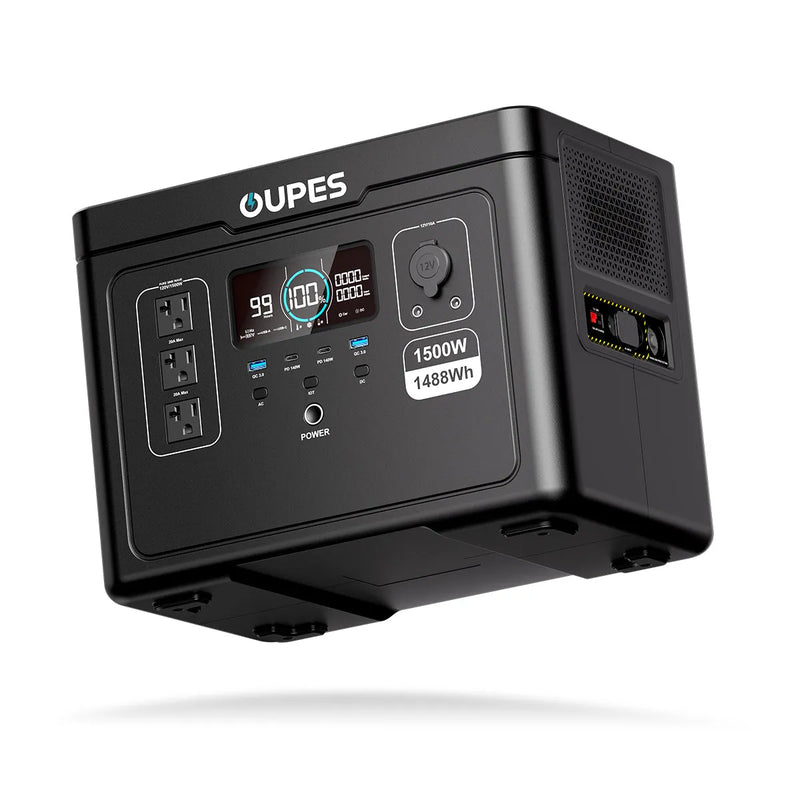
In today’s fast-paced and increasingly mobile world, the need for reliable, portable power sources is greater than ever. Whether you're camping in the wilderness, dealing with a power outage, or simply looking to reduce your reliance on traditional energy sources, a portable solar power station can be a game-changer. But how exactly does this high-tech gadget work? What makes it capable of turning sunlight into usable electricity for your everyday devices?
Understanding the inner workings of a portable solar power station can help you make informed decisions, maximize efficiency, and appreciate the marvel of clean, renewable energy on the go. In this guide, we’ll break down the key components, processes, and features that make these power stations function seamlessly—whether you’re deep in the woods or parked at a sunny beach.
Core Components of a Portable Solar Power Station
To understand how a portable solar power station works, it’s essential to break down its core components. While models vary in size and capacity, they all share a few fundamental parts that work together to capture, store, and deliver electricity.
First, the heart of any portable solar power station is its rechargeable battery. Most modern units use lithium-ion or lithium iron phosphate (LiFePO4) batteries due to their lightweight design, long lifespan, and high energy density. This battery is where the energy collected from solar panels or other sources is stored until you're ready to use it.
Next is the charge controller, an essential component that regulates the voltage and current coming from the solar panels to the battery. Without it, the battery could overcharge or overheat, potentially damaging the system. The charge controller ensures safe and efficient charging by converting variable solar input into a consistent charge flow.
Another crucial element is the inverter. Most of our everyday devices require AC (alternating current) electricity to operate, but solar panels and batteries generate and store DC (direct current) power. The inverter converts DC into AC so you can plug in appliances, laptops, and other electronics just as you would at home.
Lastly, the input/output ports make the system user-friendly. These include AC outlets, DC ports, USB-A, and USB-C connections, allowing users to power or charge a wide range of devices. The station may also feature a digital display to monitor power input, output, and battery status in real time.
The Role of Solar Panels in Energy Harvesting
At the center of solar-powered operation is the solar panel—a clean, renewable way to capture sunlight and convert it into electricity. When used with a portable power station, solar panels serve as the fuel source, enabling the station to operate independently of the electrical grid.
Solar panels are composed of photovoltaic (PV) cells, typically made from semiconductor materials like silicon. When sunlight hits these cells, it excites electrons and generates an electric current—a phenomenon known as the photovoltaic effect. This current is direct current (DC), which is then sent to the power station's battery for storage.
Portable power stations are often paired with foldable or briefcase-style solar panels that are lightweight and easy to transport. These panels connect to the power station through dedicated solar input ports. The better the sunlight exposure, the faster and more efficiently the panels can charge the battery. For optimal results, panels should be placed at a 30–45-degree angle facing the sun, and kept clean and unobstructed by shade or dirt.
Solar input rates vary by panel wattage and weather conditions. For example, a 100W solar panel can produce 80-90Wh per hour in direct sunlight. Charging a 500Wh power station with such a panel might take 6–8 hours under ideal conditions. Some advanced systems allow for chaining multiple panels together, reducing total charging time significantly.
Additionally, many portable solar panels include built-in stands, waterproofing features, and protective materials, making them durable and reliable even in rugged environments. Understanding the synergy between solar panels and the power station helps users get the most out of every sunny hour.
How Energy Is Stored and Distributed
Once solar panels capture and convert sunlight into electricity, that energy needs to be stored and distributed efficiently. This process is where the portable power station’s internal systems come into play, ensuring that every watt is preserved and delivered safely to your devices.
As solar energy flows into the power station, the charge controller ensures that the battery receives the correct voltage and current. It prevents overcharging, which can degrade battery health over time, and helps maintain a consistent power flow—even as sunlight conditions fluctuate throughout the day.
Once the energy is stored in the battery, it remains available until you need it. When you plug in a device—whether it's a smartphone, laptop, camping light, or mini fridge—the station draws power from the battery and routes it through the appropriate output port. If the device requires AC power, the built-in inverter steps in to convert DC to AC.
Many power stations are equipped with intelligent monitoring systems that balance energy distribution. For instance, if you're charging multiple devices at once, the system will allocate power efficiently, prioritizing high-demand appliances or ensuring steady current to sensitive electronics. Some even offer customizable output settings or app control for advanced users.
It’s also worth noting that high-capacity stations can support pass-through charging, allowing you to charge the battery with solar energy while simultaneously using it to power other devices. This is particularly useful for long camping trips or emergency situations where continuous power is essential.
In terms of longevity, modern batteries typically support hundreds to thousands of charge cycles. LiFePO4 batteries, in particular, can last over 2000 cycles, offering years of consistent performance. With proper maintenance and usage, energy storage in a portable power station remains dependable and efficient over time.
Real-Life Applications and Use Cases
Now that we’ve covered how portable solar power stations work, it’s time to explore how they fit into real-world scenarios. These devices are versatile, practical, and increasingly popular across a wide range of lifestyles and industries.
For outdoor enthusiasts, a portable solar power station is a must-have. Whether you’re camping, hiking, or RVing, it provides power for lights, fans, cooking gear, GPS devices, and smartphones. Solar panels make it easy to stay off-grid for extended periods without sacrificing comfort or safety.
In emergency preparedness, a power station acts as a backup energy source during natural disasters, blackouts, or grid failures. It can keep communication lines open, preserve medication in a mini fridge, power medical devices like CPAP machines, and provide light and heat when needed most. With silent operation and no fumes, they are safer and more convenient than gas generators.
Professionals who work in the field—such as photographers, contractors, and event organizers—also rely on these stations to run equipment, charge tools, or set up temporary workstations. They offer a compact, mobile solution for energy needs that traditional outlets can’t meet.
Homeowners interested in sustainable living use solar power stations to reduce their energy bills and carbon footprint. Paired with rooftop solar panels, they can serve as a storage solution for surplus solar energy, reducing grid reliance and enhancing energy independence.
In education and outreach, portable power systems are deployed in remote or under-resourced areas to power laptops, projectors, and internet routers—bridging the digital divide and supporting learning in rural communities.
Their broad range of applications demonstrates just how impactful and adaptable portable solar power stations can be, whether you're in the city or the wild.
Tips for Maximizing Efficiency and Performance
Getting the most out of your portable solar power station requires more than just setting it in the sun and plugging in devices. With a few smart strategies, you can extend its runtime, enhance solar input, and ensure long-term reliability.
Start by choosing the right solar panel wattage for your needs. A larger panel will charge your power station faster, especially if you frequently use high-wattage appliances. Keep the panels clean and well-positioned throughout the day. Use adjustable stands or trackers to follow the sun’s angle and boost solar intake.
Always monitor your power usage. Use energy-efficient appliances and turn off devices when not in use. Charge phones, cameras, and batteries during the day when solar input is strongest, reserving battery power for night-time essentials.
When charging the station, avoid shaded or partially covered areas, which can significantly reduce charging efficiency. In colder climates, bring the unit indoors at night to prevent battery degradation from freezing temperatures.
Store the power station in a cool, dry place when not in use. Avoid leaving it in direct sunlight for long periods, which can heat the battery and reduce lifespan. For long-term storage, maintain a partial charge and recharge every few months to keep the battery healthy.
Lastly, update your firmware if your station supports it. Some brands offer updates that improve performance, safety, and compatibility with new devices. Staying current ensures you’re getting the best performance your station can offer.
By following these tips, you’ll not only maximize daily performance but also preserve the integrity of your power station for years to come.
Portable solar power stations are a remarkable blend of innovation, sustainability, and convenience. They harness the power of the sun, store it efficiently, and distribute it exactly when and where you need it—without the noise, fuel, or emissions of traditional generators.
Understanding how these systems work—from solar panel input to energy storage and output—empowers you to use them effectively across a variety of scenarios. Whether you're preparing for emergencies, embracing off-grid living, or simply seeking a greener energy solution, portable solar power stations are a smart and versatile choice for modern energy needs.

